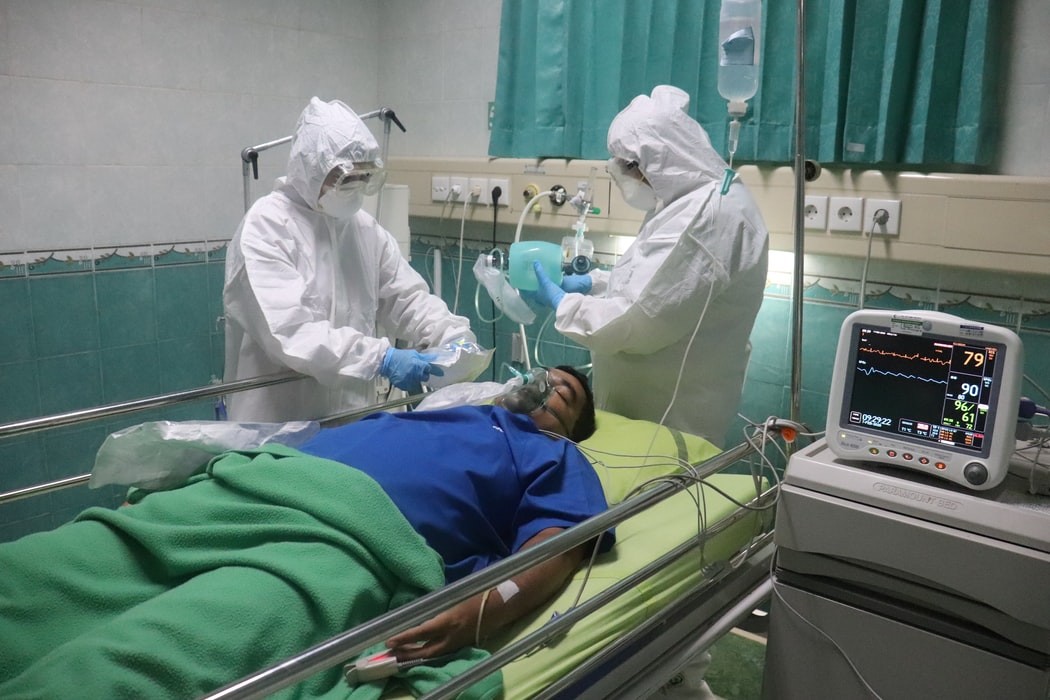
Knowledge is power: The science behind COVID-19
UC students and faculty in the College of Medicine create course on COVID-19
Students at the University of Cincinnati are exploring the science behind the COVID-19 pandemic in a new class that debuts Monday, Jan. 25. The class includes a series of 13 lectures from faculty in the College of Medicine and Cincinnati Children’s Hospital Medical Center who are actively conducting research in or caring for patients with COVID-19. These lectures address the disease’s virology, impact on organ systems, detection and treatment, epidemiology, vaccination and psychosocial impact on society.
The class, titled Science of the COVID-19 Pandemic, was conceptualized and developed by a group of UC medical students and students in the Medical Sciences undergraduate program under the mentorship of William Miller, PhD, professor of molecular genetics and director of the Molecular Genetics Graduate Program, and Anil Menon, PhD, associate dean of undergraduate education in the UC College of Medicine. The course offers two hours of credit for undergraduates and course directors will make all lectures available to the public on their website.

Scottie Emmert/photo provided
“The COVID-19 pandemic is likely to be the event of the century, having affected millions of people across the globe and causing millions of deaths,” said Menon, also a professor of molecular genetics. “The College of Medicine, UC Health and Cincinnati Children’s Hospital Medical Center have been at the forefront of helping manage the pandemic in our Tristate region.”
“There has been a tremendous interest among students to learn from our experts who are on the frontlines of clinical care and research,” Menon said. “This course addresses this need by bringing together experts into a single point of contact. The fact that it is student-led is highly innovative, as our students moderate the discussions so that other students can effectively learn and interact with our experts.”

Nora Lakes/photo provided
Lakes, a first-year MD/PhD student in the College of Medicine, said lectures will be taped and placed on the College of Medicine website. “We want to make sure the knowledge is available to the entire Cincinnati community,” she explained. “This pandemic has really highlighted the need for scientific information to be more accessible to the public so one of our major goals for this course was to create a platform for local experts to educate the community about the science of COVID-19.”
Planning for the course began during the summer when the university offered grants to encourage faculty-student collaboration to develop a course on COVID-19 that engages students and uses faculty expertise, explained Emmert, a second-year medical student.
That’s when professor Menon reached out to students Emmert, Lakes, Patel and Nguyen for assistance. “The idea was to try and decrease the stress associated with COVID-19 from the student perspective,” said Emmert. “Students have had to move off campus, change how they learn and interact as a result of the pandemic. We thought the entire university and frankly the Cincinnati community didn’t have a good idea of what COVID was all about.”

Minh Nguyen/photo provided
“We thought about making the lectures available to everyone so members of the public can tap into resources on topics we students found interesting,” said Emmert. “We thought this is a way to provide knowledge and lessen anxiety.”
Professor Miller said coronaviruses are not new and that scientists have been researching these viruses for the past 20 years.
“We have four common cold causing coronaviruses,” said Miller. “There is a lot of overlooked virology because the common cold isn’t as deadly as coronavirus. We know a lot about the basic molecular virology of coronavirus because of our study of the common cold. Additionally, the SARS outbreak of 2002 and the MERS outbreak of 2012 led to similar respiratory diseases and gave scientists a head start on being able to develop antiviral vaccines for COVID-19.”

Rahul Patel/photo provided
The rapid generation of a vaccine is the result of basic science findings and have led to the FDA Emergency Use Authorizations of vaccines from Pfizer/BioNTech and Moderna that exhibit 95% efficacy, explained Miller. Molecular epidemiologists and virologists continue to make important contributions as the world battles this virus. Sequencing of the virus isolates and enables epidemiologists to rapidly track the appearance of new variants and follow the evolution of the virus over time, according to Miller.
“If variants are detected that appear to be capable of evading the current vaccines, the vaccine can be quickly retooled within a matter of days and the pipeline adjusted to produce vaccines to fight off the new variants,” said Miller.
“It is undeniable that the dedicated work of virologists, molecular biologists, biochemists, structural biologists and epidemiologists from around the world have contributed in remarkable ways to understanding the pathogenesis of this disease and producing effective vaccines,” said Miller. “With their unwavering perseverance and excellent work, we are beginning to see the light at the end of the tunnel.”
Learn more about the Science of the COVID-19 Pandemic course online.
Featured image of simulated COVID-19 patient with medical professionals is courtesy of Unsplash.
Related Stories
Doctors prepare for surgeries with 3D-printed organs
April 11, 2025
Meteora3D, a Venture Lab-backed startup, helps surgeons better understand upcoming procedures by designing and developing quick-to-produce, 3D-printed anatomical models.
1819 Learning Lab: Introducing Cincinnati’s innovation launchpad
April 10, 2025
The 1819 Learning Lab sparks innovation and new ways of thinking for corporate teams and startup founders alike from the heart of the Cincinnati Innovation District.
UC tracks ‘evolving’ opioid epidemic across US
April 10, 2025
The heart of the opioid epidemic that killed 665,341 people in the United States between 2005 and 2020 shifted geographically from the Pacific Northwest to the East, according to a new geographical analysis.
